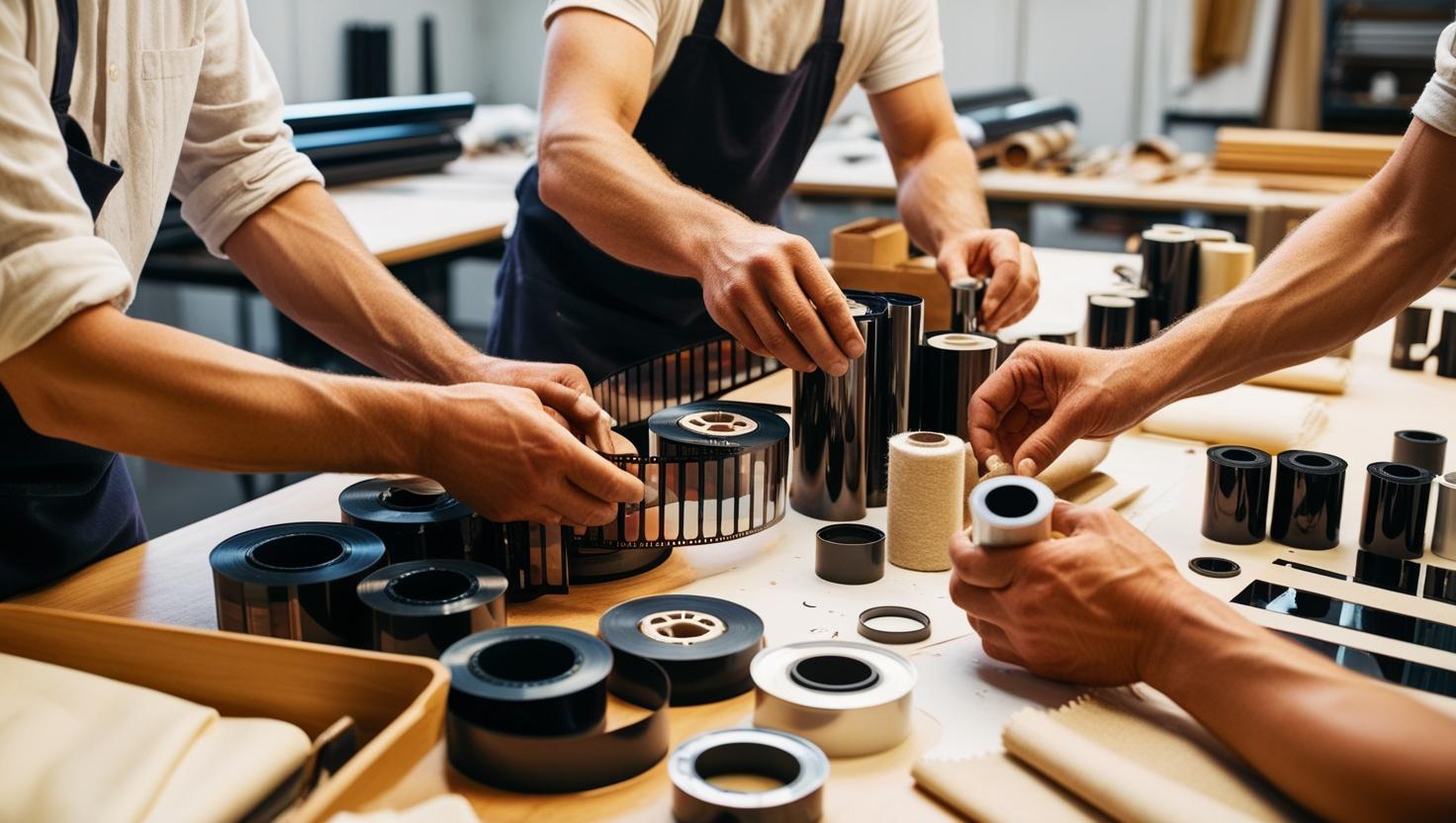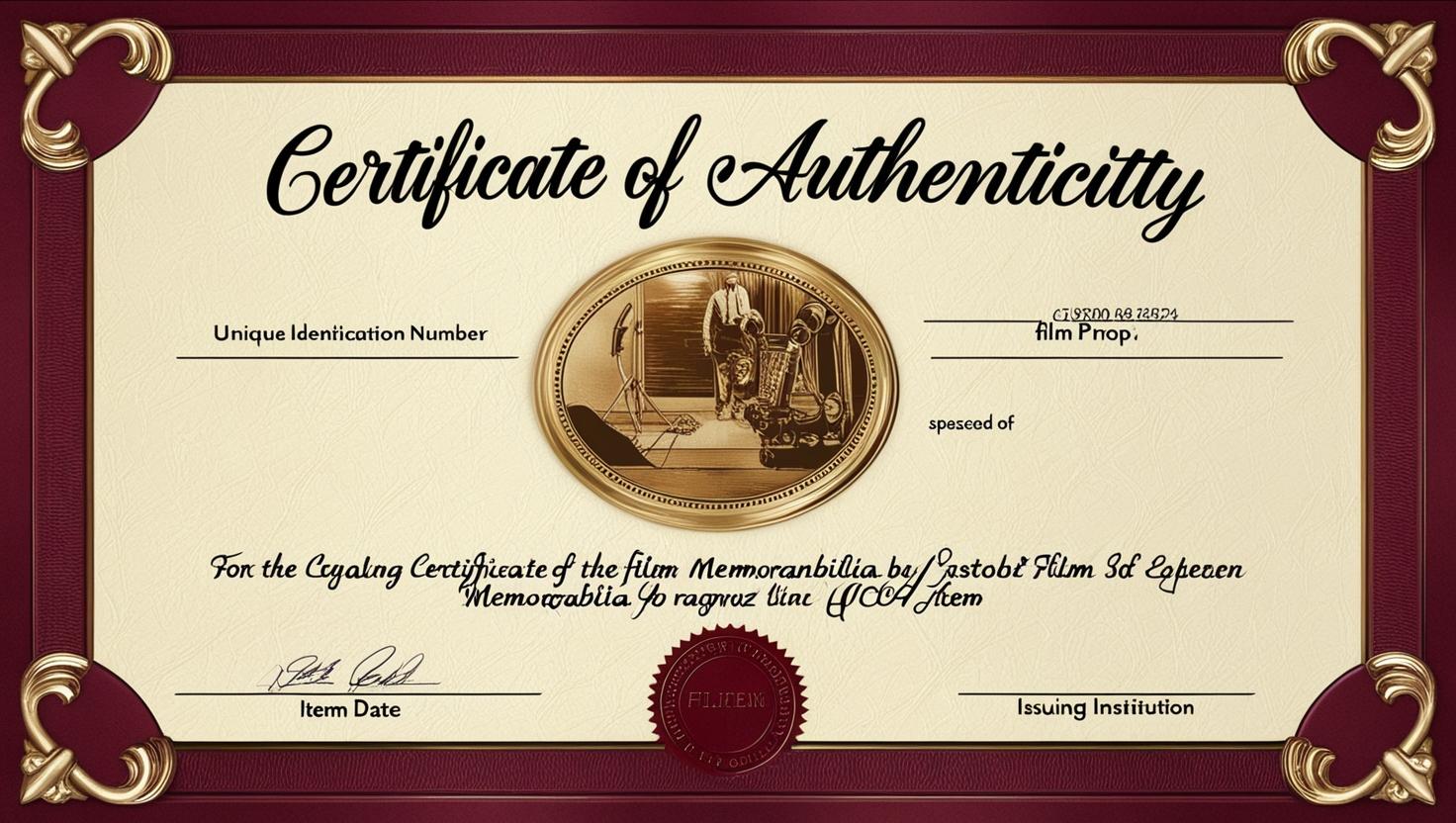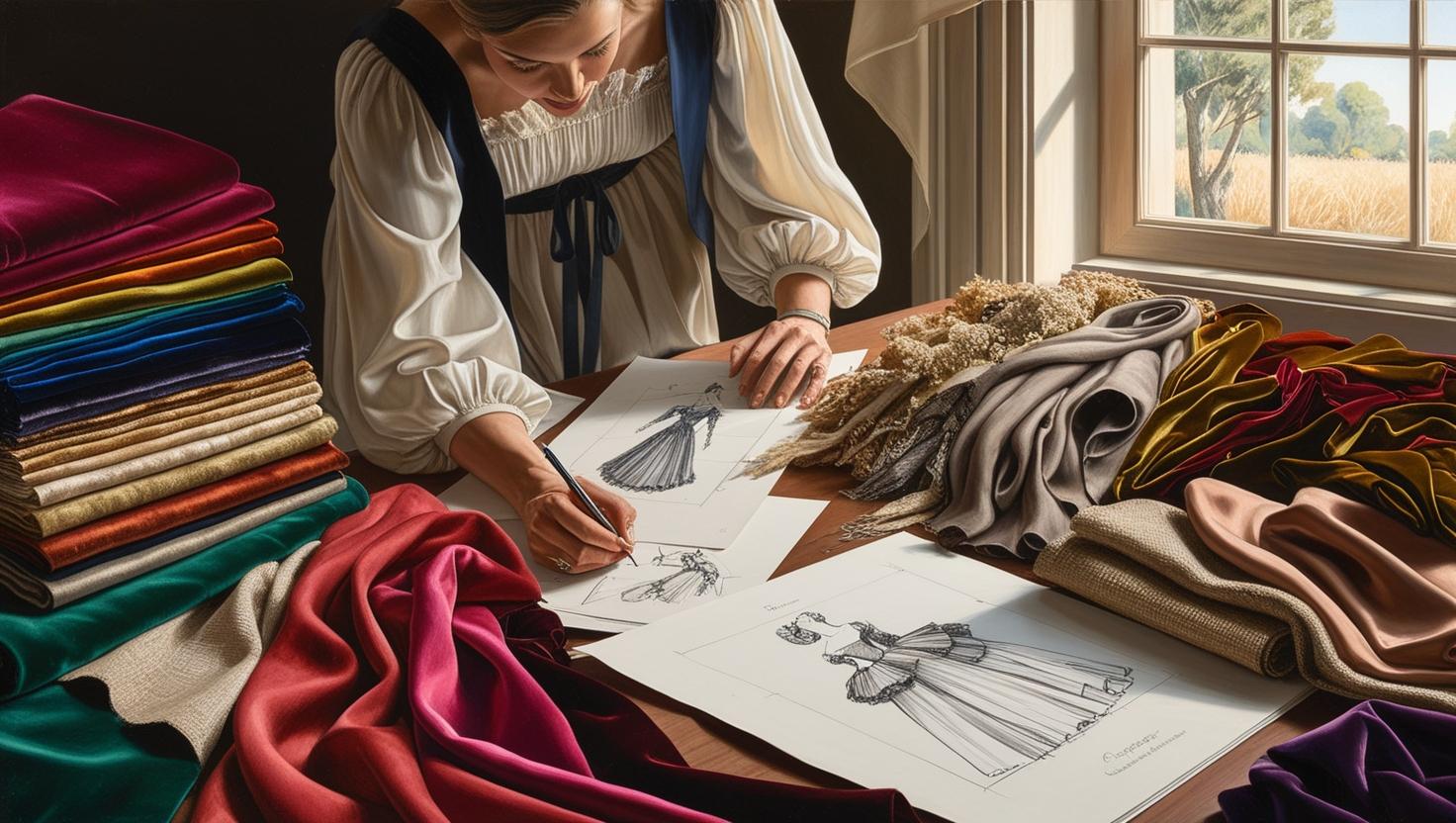The intricate artistry behind creating film props and accessories involves thoughtful material selection that harmonizes aesthetic requirements, practical functionality, and production limitations. Film craftspeople meticulously choose substances capable of withstanding filming demands while achieving the visual aesthetic envisioned by directors and design teams. These material decisions profoundly influence not only the on-screen appearance of props and accessories but also their longevity as collectible artifacts after production concludes. Exploring the diverse materials utilized in film accessories offers collectors valuable perspectives for evaluating authenticity, assessing craftsmanship, and appropriately preserving these tangible pieces of cinematic heritage.
Commonly Used Materials in Props & Accessories
Leather stands among the most frequently employed materials in film accessories owing to its remarkable versatility, resilience, and capacity to develop character through natural aging processes. Costume designers and prop artisans often select leather for items such as jackets, holsters, carryalls, and binding elements because it can be readily manipulated, colored, and shaped to achieve specific visual outcomes. The material readily accepts treatments that create the appearance of age or wear, enabling new items to appear appropriately weathered for historical settings or characters with well-used possessions. Moreover, leather's natural variations in texture and grain provide visual complexity that translates effectively on camera while offering tactile authenticity for performers interacting with the accessories.
Metal elements feature prominently in numerous film accessories, spanning from elaborate jewelry pieces to weaponry, hardware components, and decorative embellishments. Prop creators may utilize various metals such as aluminum, brass, steel, or silver depending on requirements for weight, aesthetic appearance, and functional needs. For items necessitating lightness for performer comfort during prolonged scenes, aluminum often proves ideal, whereas brass might be selected for its distinctive coloration and patina potential. Some productions incorporate authentic precious metals for close-up shots of significant items, yet may substitute more economical alternatives for duplicate versions used in action sequences or distant camera perspectives. The reflective qualities of different metals also influence selection, as certain finishes might create unwanted light reflection under studio illumination, necessitating careful consideration of both material composition and surface treatment.
Synthetic materials have gained increasing significance in contemporary filmmaking, offering prop creators expanded possibilities for generating unusual textures, reducing production expenses, and addressing ethical considerations regarding animal-derived products. Advanced plastics, resins, and synthetic fabrics enable the creation of fantastical elements that would prove impossible with natural materials alone, while sophisticated formulations allow for convincing simulation of more costly substances. Silicone compounds provide flexibility and skin-like properties essential for certain specialty props, while urethane resins offer moldability and structural integrity for items requiring durability. The emergence of advanced thermoplastics has transformed prop production through enabling rapid prototyping via 3D printing technology, allowing for precision replication and last-minute modifications that would have been unattainable in previous eras of filmmaking.
Real vs. Faux: Leather, Fur, and Metals
Genuine animal products such as authentic leather and fur have traditionally been valued in filmmaking for their natural appearance, tactile qualities, and photogenic characteristics. Nevertheless, modern productions increasingly incorporate high-quality synthetic alternatives capable of closely replicating the visual properties of animal-derived materials while addressing ethical concerns and minimizing production expenses. Contemporary faux leathers have progressed significantly, with premium options delivering remarkably convincing grain patterns, appropriate pliability, and aging characteristics previously achievable only with genuine leather. These synthetic alternatives prove especially beneficial for productions requiring multiple identical copies of accessories, as they typically provide greater consistency than natural materials with inherent variations.
Metal substitution represents a well-established practice in prop-making, with various materials employed to simulate more expensive or impractical metals. Aluminum frequently substitutes for steel in weapons or armor to minimize weight for performer comfort, while brass-plated zinc alloys often replace solid brass for decorative elements. Modern productions benefit from sophisticated metal-infused resins that deliver the appearance and weight characteristics of solid metal while offering greater flexibility in design and fabrication. Nonetheless, discerning viewers and collectors may observe subtle differences in how authentic and simulated metals interact with light or develop patina over time. The decision between genuine materials and convincing replications often depends on factors including screen time, camera distance, performer interaction requirements, and whether the items might subsequently enter the collector marketplace.
Surface treatments play essential roles in rendering faux materials appear authentic, with specialized finishing techniques applied to transform basic substances into convincing simulations. Skilled artisans may apply multiple layers of paint, glazes, and protective coatings to plastic components to recreate the subtle color variations and reflective properties of genuine metals or natural materials. Computer-assisted design and manufacturing processes have further expanded possibilities for creating realistic textures and patterns in synthetic materials, enabling microscopic surface details that enhance visual authenticity even under close examination. Yet despite these advancements, experienced collectors can frequently distinguish genuine materials from simulations through careful assessment of characteristics such as weight, temperature response, edge definition, and aging patterns—knowledge that proves invaluable when evaluating potential acquisitions for authenticity.
Aging & Weathering Techniques on Materials
The sophisticated craft of artificial aging represents one of the most fascinating aspects of prop fabrication, as even items intended to appear pristine within a film's narrative context rarely remain immaculate throughout production. Leather accessories frequently undergo deliberate distressing through methods such as strategic abrasion, solvent application, or controlled environmental exposure that accelerates natural wear patterns. These processes soften edges, establish realistic crease lines, and develop patina suggesting authentic use over time. Costume departments often implement graduated aging approaches for multiple copies of identical accessories, preserving some in relatively untouched condition while heavily distressing others for different filming requirements or character development throughout a narrative.
Metal aging techniques vary considerably depending on the specific material composition and desired aesthetic outcome, with common approaches including chemical patination, heat application, mechanical distressing, or selective treatment with reactive compounds. Brass components might receive ammonia or liver of sulfur treatments to develop rich patinas ranging from subtle amber tones to deep browns or verdigris effects. Iron-based metals may undergo controlled oxidation to create authentic rust formations, while silver elements might be chemically darkened to simulate tarnishing that would naturally develop over extended periods. These artificial aging techniques demand considerable expertise to appear authentic rather than contrived or exaggerated, with the most accomplished artisans creating subtle variations and natural-looking progression capable of withstanding close camera scrutiny.
Synthetic materials present unique challenges and opportunities for aging effects, frequently requiring specialized approaches different from those employed with natural substances. Plastic components typically respond effectively to strategic paint application, with dry-brushing and wash techniques emphasizing textural details while simulating accumulated grime in recessed areas. Heat manipulation can create convincing wear patterns by subtly altering edges or surfaces, while careful abrasion establishes believable stress marks at contact points. Nevertheless, certain synthetic materials resist specific aging techniques or exhibit unrealistic deterioration patterns that skilled artisans must accommodate. The most convincing aged props typically incorporate multiple weathering approaches applied in logical sequence, establishing layered histories suggesting natural accumulation of wear rather than artificial distressing implemented simultaneously.
How Material Choice Affects Collectibility
The fundamental quality of materials significantly influences both the immediate appeal and enduring value of film accessories within the collector marketplace. Items fabricated from genuine, premium materials such as full-grain leather, solid metals, or fine textiles typically generate greater interest than those constructed from lower-grade or synthetic alternatives, even when their screen prominence was comparable. This preference reflects not merely the inherent value of quality materials but also their superior aging characteristics and tactile properties that enhance the collector experience. Nevertheless, exceptions exist for particularly significant accessories where historical importance or screen prominence outweighs material considerations, or for items from science fiction or fantasy contexts where synthetic materials may authentically represent futuristic or otherworldly substances.
Durability considerations influence collecting decisions across various material categories, as certain substances demonstrate superior resistance to environmental factors and handling over extended periods. Genuine leather, while valued for its authenticity and aesthetic appeal, may require more careful preservation than contemporary synthetics engineered for stability. Metal components might develop attractive patinas with appropriate care yet could be vulnerable to corrosion under suboptimal conditions. These factors become particularly significant for collectors viewing accessories as potential investments rather than merely display pieces. The relationship between material quality and preservation potential often creates an inverse dynamic between items that appear impressive immediately yet deteriorate rapidly versus those maintaining stable condition with appropriate care, potentially affecting long-term valuation trends within collecting communities.
Authentication challenges vary considerably across different material types, with certain substances providing more definitive indicators of period-appropriate production than others. Knowledgeable collectors may identify anachronistic materials suggesting reproduction rather than original production items, such as modern synthetic leathers in supposedly vintage accessories or contemporary metal alloys in period weaponry. The physical behavior of materials when manipulated often provides additional authentication clues, as genuine materials typically exhibit characteristic flexibility, weight distribution, and aging patterns distinct from replicas. Notwithstanding, as reproduction techniques continue advancing, the material-based distinction between authentic props and high-quality replicas becomes increasingly subtle, requiring collectors to develop sophisticated assessment skills or rely on provenance documentation beyond physical examination alone.
Care Tips Based on Material Type
Leather accessories necessitate specialized maintenance approaches that balance preservation requirements with respect for intentional aging effects created during production. Periodic conditioning with suitable products helps prevent excessive drying or structural failure while preserving the material's suppleness and character. However, excessive cleaning might inadvertently remove desirable patina or distressing that contributes to the piece's authentic appearance and historical significance. Environmental control represents a critical concern for leather preservation, as fluctuating humidity levels can cause damaging expansion and contraction cycles. Storage solutions should avoid direct contact with untreated wood, certain plastics, or newsprint that might transfer harmful compounds to leather surfaces over time. For exceptionally valuable leather accessories, consultation with conservation specialists may provide guidance tailored to the specific tanning methodologies and treatments utilized in the original fabrication process.
Metal components benefit from careful handling protocols that minimize exposure to skin oils, which can accelerate tarnishing or corrosion processes. Protective cotton gloves provide effective protection during handling, while appropriate storage environments regulate humidity levels that might otherwise promote oxidation. For items with intentional patina created for filming purposes, collectors face challenging decisions regarding whether to maintain these artificial aging effects or allow natural processes to progress. Protective coatings might stabilize certain finishes but could potentially compromise authenticity if not originally present during production. Different metal compositions require individualized care approaches—brass and copper respond effectively to specific metal polishes but may be damaged by formulations intended for silver, whereas stainless steel generally requires minimal intervention beyond occasional cleaning with mild cleansing agents.
Synthetic materials present diverse preservation challenges depending on their specific composition, with certain plastics remaining stable for decades while others may exhibit concerning degradation even under optimal conditions. Preventing direct sunlight exposure proves essential for avoiding color alteration and structural weakening in numerous synthetics, while maintaining moderate temperature and humidity levels helps prevent deformation or embrittlement. Unlike natural materials that sometimes benefit from occasional handling to distribute inherent oils, many synthetic components are best preserved through minimal contact. Collectors should remain particularly attentive to indicators of chemical breakdown such as surface tackiness, microcracking, or unusual odors suggesting problematic deterioration requiring professional conservation intervention. When displaying mixed-material accessories, consideration of the varying environmental requirements of each component helps establish compromise conditions that reasonably accommodate the preservation needs of all materials present.





Leave a comment
This site is protected by hCaptcha and the hCaptcha Privacy Policy and Terms of Service apply.